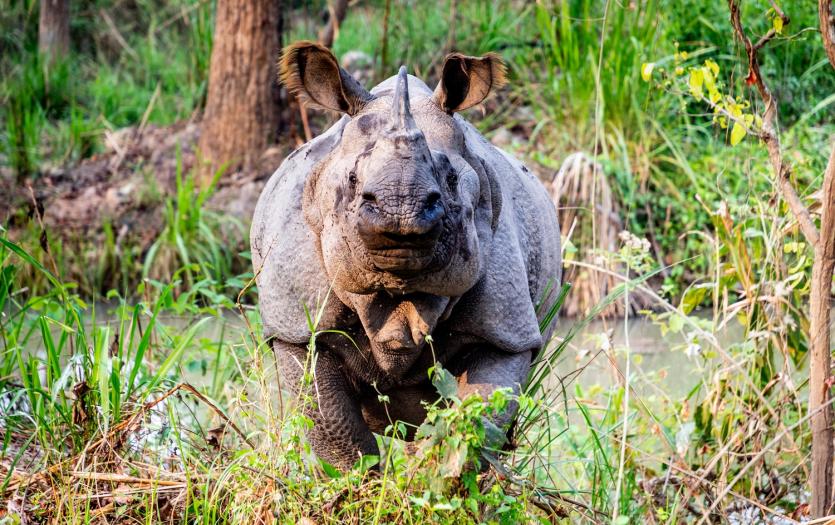One horn Rhino at Chitwan National Park, Nepal. Photo by Kedar Bhusal on Unsplash
By Patryk Krych | The World Daily | JANUARY 24th 2022
The one-horned rhinos had come very close to extinction several decades ago with the mass amounts of poaching and hunting, though had made a shocking recovery since then. Today, however, they are once again threatened, only with the far more severe menace of climate change.
The number of greater one-horned rhinos in Nepal had undergone a severe number drop in the past, with their populations having been recorded as low as around 100 living rhinos in the mid-1960s, and slowly crawling back up to an estimated 645 counted in 2015, and then over 750 in 2021, according to the World Wide Fund for Nature (WWF).
They are still considered as vulnerable by the International Union for Conservation of Nature (IUCN), but the establishment of a national park in the country had been am major help for their revival.
Chitwan national park in Nepal currently has the second largest population of these one-horned rhinos, following India’s Kaziranga national park. Together, the population in the two parks makes up about 70% of the species’ total worldwide number. However, this may come to change with the new emerging threat to rhino populations – that of course, being climate change.
“Poaching used to be the reason for rhino mortality. But in recent years, the government has done an excellent job in protecting rhinoceroses from poaching,” said Ganesh Pant, a conservation officer from Nepal’s Department of National Parks and Wildlife Conservation.
Between 2016 and 2020, around 100 rhinos had been reported to have died due to either unknown causes, or to natural circumstances. In this period of time, there had only been 5 deaths that’d been found to have been related to poaching.
“At this point, we cannot say that [these deaths are] only due to the impacts of climate change,” Pant added, though had confirmed, along with a team of researchers, in a study using a set of vulnerability indicators that the rhinos were in fact vulnerable to the impacts of climate change, and thus that it may only be a matter of time before rhino deaths are traceable to climate change.






